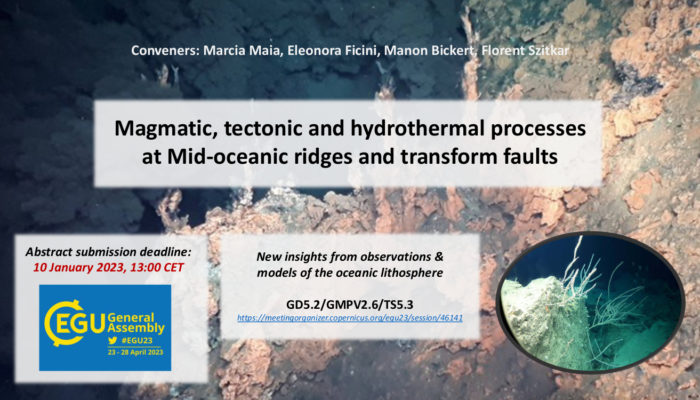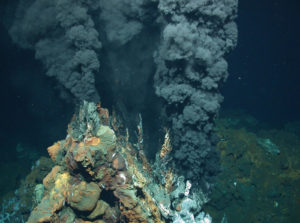
The abstract submission deadline for #EGU23 is in less than a month (10 January 2023)! It can be difficult to decide which session is the best to present your research…As in the past years, we are here to help you find the right session for you! Today we highlight the session GD5.2 “Magmatic, tectonic and hydrothermal processes at Mid-oceanic ridges and transform faults: new insights from observations and models of the oceanic lithosphere“, organized by Marcia Maia, Eleonora Ficini, Manon Bickert and Florent Szitkar, co-organized by GMPV2 and TS5.
The conveners say:
Movements across faults allow part of Earth’s surface to move in response to forces driven by tectonic plate motions. Mid-oceanic ridges (MORs) provide the unique opportunity to study two of the three known plate motions: divergence (at the ridge axis) and strike-slip motion along transform faults (crosscutting the ridge axis). Knowledge on active and past processes building and altering the oceanic lithosphere has increased over the past 20 years due to improvements in deep sea technologies and numerical modeling techniques. Yet, several questions remain open, such as the relative role of magmatic, tectonic and hydrothermal processes in the building of the oceanic lithosphere at the ridge axis, especially at slow and ultra-slow spreading ridges and at their intersection with transform faults. Transform faults and their older parts, i.e., the fracture zones, are still poorly studied features.
For a long time, they were considered as cold and, for fracture zones, inactive; however, evidences of magmatism have been observed inside both features.Given the complex network of faults existing within these structures, they represent ideal pathways for hydrothermal percolation into the Earth’s lithosphere and may therefore play a significant role in the chemical and the thermal budget of the planet, as well as in the fertilization processes of the oceans in nutrients. This session objective is to share recent knowledge acquired along mid-oceanic ridge axes, transform faults and fracture zones. Works using modern deep-sea high-resolution techniques are especially welcome. The session also welcomes recent developments in thermo-mechanical models, which integrate geophysical and geological data with numerical modeling tools, bridging the gap between observations and numerical models.
So, if you want to submit your abstract to this session, this is the link!

